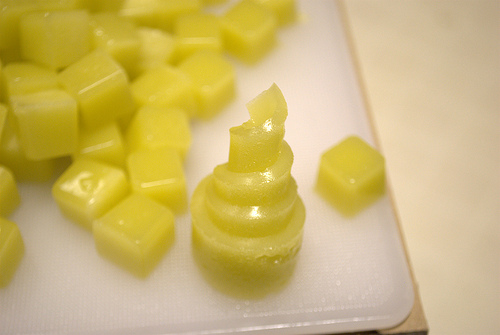By Amy Van Veen (The Cascade) – Email
Print Edition: July 17, 2013
Sun protection is the hot topic of the day (pun intended) and while we all have heard it’s better to wear some than to go bare, there are some health concerns surrounding that bottle of chemically-saturated SPF that many people don’t consider.
What if the solution to all your oxybenzone woes was the same product you use to make a tasty bruschetta? Yes. Olive oil—along with other natural oils—has been found to contain SPF.
Now, I’m hardly suggesting you dose yourself with coconut, castor, almond or chaulmoogra (whatever that is) oil before stepping out onto your beach mat, but the possibility for natural ingredients to be used in sunscreens takes away many of the fears related to products dependent on those chemicals you can’t even pronounce listed under the ingredients.
According to Environmental Working Group (EWG), these sorts of ingredients do far more than just help filter out UVA and UVB rays. They can cause allergic reactions, be a factor in skin damage and even disrupt the natural hormonal and reproductive systems. It’s hard to believe that something created to protect our skin can permeate it and affect such things as endometriosis (which can lead to infertility) and be absorbed to such an extent that it can be passed on through a mother’s milk.
Instead of taking this as a free pass to avoid the greasy feeling of dollar-store sun protection, EWG suggests informing yourself about what active chemical ingredients actually do to your body. The main chemicals to avoid are oxybenzone and octinoxate which can affect reproductive systems and hormone levels. Those chemicals with slightly fewer toxicity concerns are homosalate, octisalate and octocrylene, which are found to cause skin allergies and disrupt some hormone levels.
Additionally, there is the risk of nanoparticles and nano-powders which, though they don’t penetrate the skin, can be inhaled and enter the bloodstream through the lungs – so beware of the spray sunscreens that include ingredients such as zinc oxide and titanium oxide.
What about all those natural ingredients, then? Is it really a great idea to ditch the Coppertone for a container of avocado oil?
One study done by the University Institute of Pharmacy in Raipur, India, suggests that these different natural oils can be used in the production process of sunscreens rather than just being used on their own. Olive oil and coconut oil are at the top of the list with SPF as high as 7.5. Other natural oils include castor at 5.6 and almond at 4.6.
While some mommy blogs might suggest taking a DIY approach to making your own sunscreen – the process is much more complicated than mixing together lotion and oils and calling it natural sunscreen. The production process is still important for making sure the natural active ingredients remain active – but there are dozens of natural sunscreens on the market for you to reap the benefits of fewer hormone disruptions at the same protection levels.


